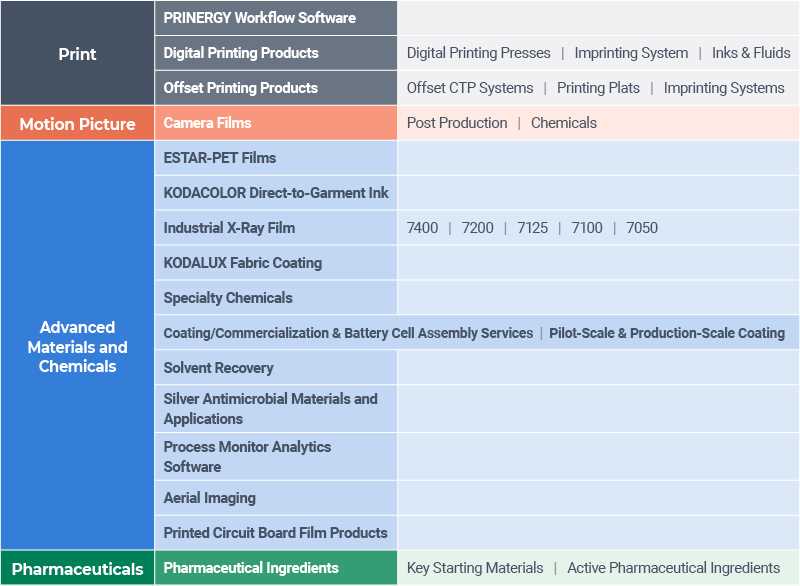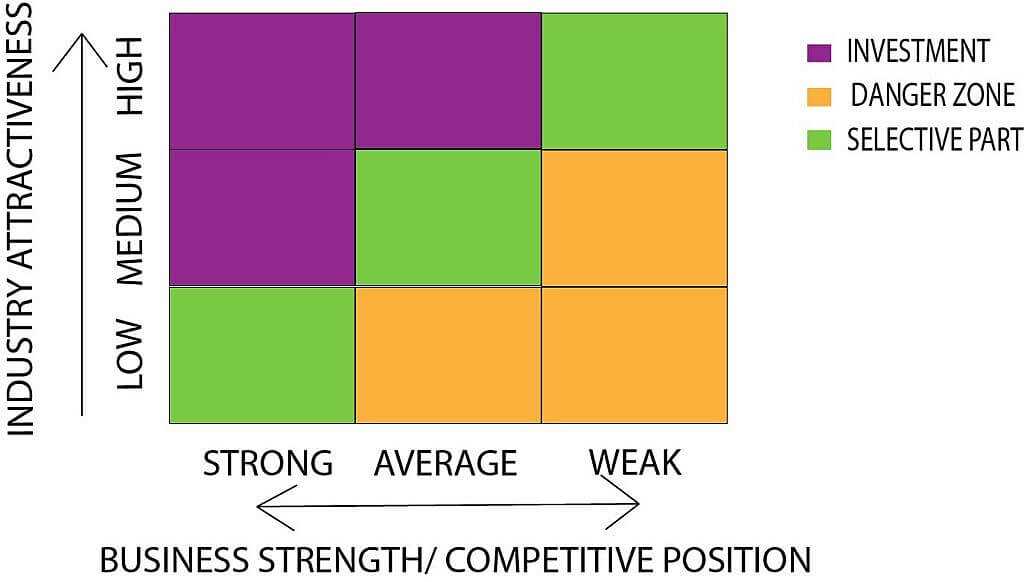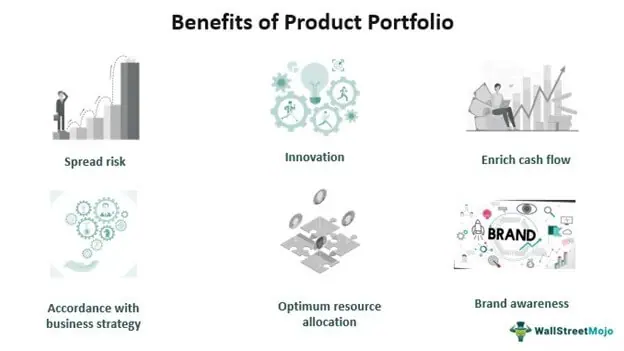Product Portfolio Analysis: Definition and Key Insights
Product portfolio analysis is a strategic management tool that helps businesses evaluate their product offerings and make informed decisions about resource allocation and investment. It involves assessing the performance and potential of each product in a company’s portfolio, as well as analyzing their market position and competitive advantage.
Product portfolio analysis provides a comprehensive view of a company’s product mix, allowing managers to identify which products are generating the most revenue and profit, and which ones may require further investment or divestment. It helps businesses understand the strengths and weaknesses of their product offerings, and enables them to align their resources and strategies accordingly.
By conducting a product portfolio analysis, companies can gain insights into their market position, customer preferences, and competitive landscape. This analysis enables them to identify opportunities for growth, as well as potential threats and risks. It also helps businesses identify gaps in their product portfolio, and determine whether they need to develop new products or acquire existing ones to meet customer needs and stay ahead of the competition.
Benefits of Product Portfolio Analysis
There are several key benefits of conducting a product portfolio analysis:
- Strategic decision-making: Product portfolio analysis provides valuable insights that inform strategic decision-making. It helps businesses identify opportunities for expansion, diversification, or market penetration. It also helps them assess the impact of new product introductions or changes in market conditions.
- Risk management: By analyzing their product portfolio, companies can identify potential risks and take proactive measures to mitigate them. They can assess the impact of market fluctuations, changes in customer preferences, or competitive threats, and develop contingency plans to minimize risks and protect their market position.
Key Metrics for Product Portfolio Analysis
When conducting a product portfolio analysis, businesses typically consider several key metrics:
- Market share: This metric helps businesses understand their position in the market relative to their competitors. It provides insights into market dominance, customer loyalty, and competitive advantage.
- Revenue and profit: Assessing the revenue and profit generated by each product helps businesses identify their top performers and prioritize resource allocation accordingly.
- Growth potential: Evaluating the growth potential of each product helps businesses identify opportunities for expansion and determine where to invest their resources.
Implementing Product Portfolio Analysis
Implementing product portfolio analysis involves several steps:
- Data collection: Gather relevant data on each product in the portfolio, including sales figures, market share, customer feedback, and competitive analysis.
- Analysis: Analyze the data to assess the performance and potential of each product, identify trends and patterns, and gain insights into market dynamics.
- Decision-making: Based on the analysis, make informed decisions about resource allocation, product development, and strategic initiatives.
- Monitoring and review: Continuously monitor the performance of the product portfolio, review market conditions, and make adjustments as needed to stay competitive and maximize profitability.
Product portfolio analysis is a strategic management tool that helps businesses evaluate and manage their product offerings. It involves assessing the performance and potential of each product in a company’s portfolio to make informed decisions about resource allocation, investment, and growth strategies.
Product portfolio analysis also helps businesses identify gaps in their product offerings and opportunities for expansion. By analyzing the market and customer needs, companies can determine which products are missing from their portfolio and develop strategies to fill those gaps. This can involve developing new products, acquiring existing products, or partnering with other companies to expand the product range.
Furthermore, product portfolio analysis enables businesses to prioritize their resources and investments based on the potential return on investment. By focusing on products with high growth potential and profitability, companies can allocate their resources more effectively and maximize their overall performance.
Overall, product portfolio analysis is a valuable tool for businesses to assess and manage their product offerings. It provides insights into the performance and potential of each product, helps identify gaps and opportunities, and guides strategic decision-making. By regularly conducting product portfolio analysis, businesses can stay competitive in the market and drive sustainable growth.
Benefits of Product Portfolio Analysis
Product portfolio analysis is a strategic tool that helps businesses assess and manage their product offerings. By analyzing the portfolio, companies can make informed decisions about which products to invest in, which to discontinue, and how to allocate resources effectively. Here are some key benefits of product portfolio analysis:
| 1. Improved decision-making: | |
| 2. Risk reduction: | By diversifying their product portfolio, businesses can reduce the risk associated with relying too heavily on a single product or market. Product portfolio analysis helps identify potential gaps or weaknesses in the portfolio and allows companies to take proactive measures to mitigate risks. |
| 3. Resource optimization: | Through product portfolio analysis, businesses can identify underperforming products or those with limited growth potential. This allows them to reallocate resources to more promising products, improving overall profitability and efficiency. |
| 4. Competitive advantage: | |
| 5. Alignment with business goals: | Product portfolio analysis helps ensure that a company’s product offerings are aligned with its overall business goals and strategies. It enables businesses to focus their resources on products that are in line with their long-term vision, mission, and target market. |
Key Metrics for Product Portfolio Analysis
Product portfolio analysis is a strategic management tool that helps businesses evaluate their product offerings and make informed decisions about resource allocation and investment. To effectively analyze a product portfolio, it is essential to consider key metrics that provide valuable insights into the performance and potential of each product.
1. Market Share

Market share is a critical metric that measures the percentage of a specific product’s sales within its target market. It indicates the level of competitiveness and market acceptance of a product. By comparing the market share of different products within a portfolio, businesses can identify their most successful products and allocate resources accordingly.
2. Growth Rate

The growth rate measures the rate at which a product’s sales or revenue is increasing over a specific period. It helps businesses identify products with high growth potential and those that may be declining. By focusing on products with a high growth rate, companies can capitalize on market opportunities and allocate resources to support their expansion.
3. Profitability

Profitability is a crucial metric that assesses the financial viability of a product. It considers factors such as production costs, pricing, and revenue to determine the profitability of each product within a portfolio. By analyzing profitability, businesses can identify products that generate the highest profits and prioritize their investments accordingly.
4. Product Lifecycle Stage
5. Customer Satisfaction

Customer satisfaction is a key metric that measures the level of satisfaction or dissatisfaction customers have with a product. It can be assessed through surveys, feedback, and reviews. By considering customer satisfaction, businesses can identify products that are meeting customer needs and expectations, as well as areas for improvement. Products with high customer satisfaction are more likely to generate repeat purchases and positive word-of-mouth, contributing to long-term success.
Implementing Product Portfolio Analysis
Implementing product portfolio analysis is a crucial step for businesses looking to effectively manage their product offerings and make informed decisions about resource allocation. Here are some key steps to follow when implementing product portfolio analysis:
- Define your strategic objectives: Before conducting a product portfolio analysis, it is important to clearly define your strategic objectives. This will help guide your analysis and ensure that you are aligning your product portfolio with your overall business goals.
- Categorize your products: Categorize your products based on relevant criteria, such as market segment, product type, or lifecycle stage. This will allow you to group similar products together and analyze them as a portfolio.
- Assess product performance: Evaluate the performance of each product in your portfolio using key metrics, such as revenue growth, market share, and profitability. Identify your top-performing products, as well as any underperforming products that may need to be reevaluated or discontinued.
- Analyze market trends: Consider external factors, such as market trends, competitive landscape, and customer preferences, when analyzing your product portfolio. This will help you identify opportunities for growth and potential threats to your existing products.
- Make strategic decisions: Based on your analysis, make strategic decisions about your product portfolio. This may involve investing in high-growth products, divesting underperforming products, or introducing new products to meet emerging market demands.
- Monitor and adjust: Continuously monitor the performance of your product portfolio and make adjustments as needed. Regularly reassess your strategic objectives and market conditions to ensure that your product portfolio remains aligned with your business goals.
By implementing product portfolio analysis, businesses can gain valuable insights into their product offerings and make informed decisions to drive growth and profitability. It is an essential tool for strategic product management and should be regularly utilized to optimize the performance of a company’s product portfolio.

Emily Bibb simplifies finance through bestselling books and articles, bridging complex concepts for everyday understanding. Engaging audiences via social media, she shares insights for financial success. Active in seminars and philanthropy, Bibb aims to create a more financially informed society, driven by her passion for empowering others.
